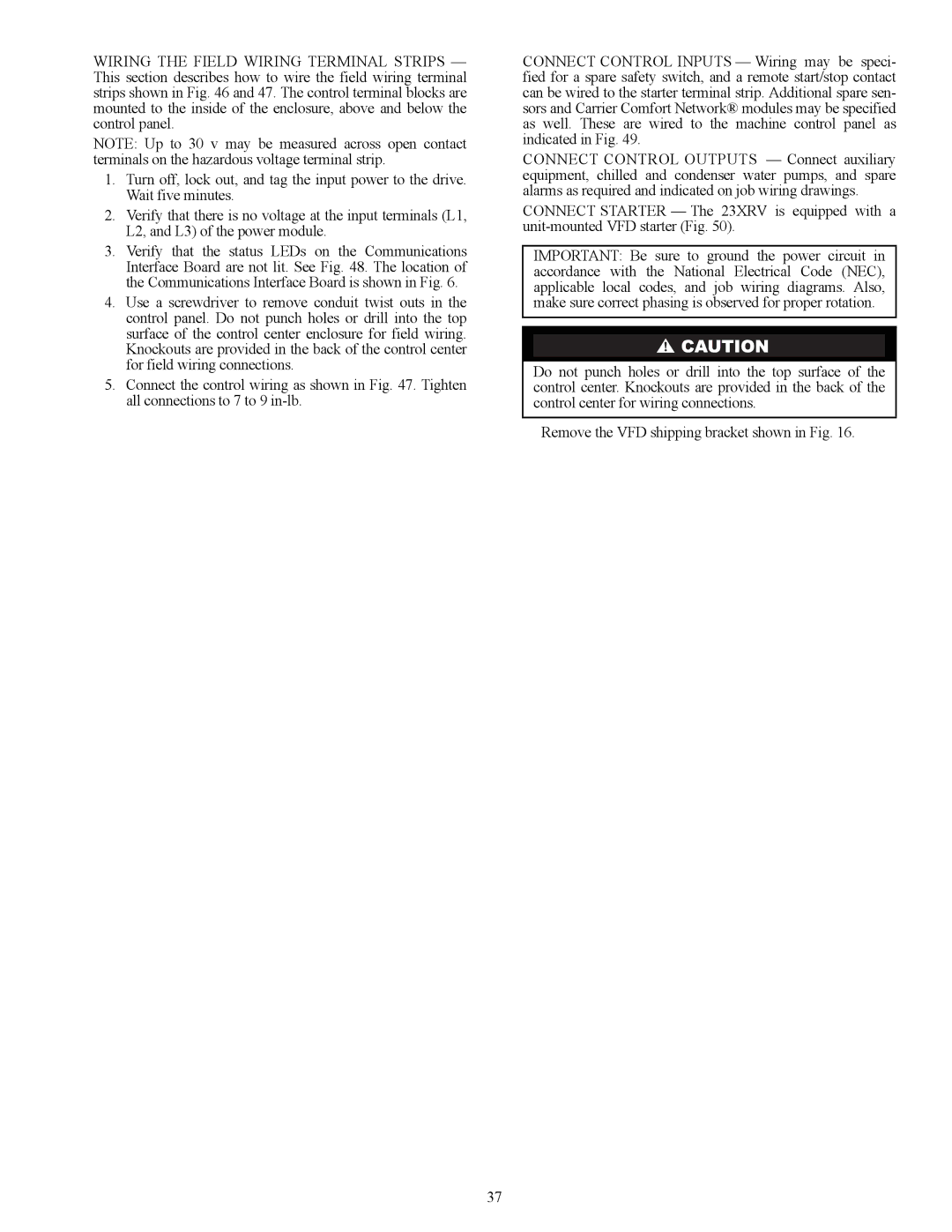HFC-134A specifications
Carrier HFC-134A, also known as tetrafluoroethane, is a hydrofluorocarbon (HFC) refrigerant widely used in a variety of cooling and heating applications. It is recognized for its role in refrigeration and air conditioning systems, making it a crucial component in many modern HVAC units. One of the key features of HFC-134A is its zero ozone depletion potential, which makes it an environmentally friendly alternative to older refrigerants like CFCs and HCFCs.The characteristics of HFC-134A include its stability, non-corrosiveness, and effectiveness at low temperatures. These properties allow it to perform efficiently in both residential and commercial refrigeration systems. The refrigerant operates within a temperature range that is ideal for many applications, including food preservation and air conditioning. HFC-134A's thermodynamic properties enable it to absorb and release heat effectively, making it suitable for both vapor-compression and absorption refrigeration cycles.
From a technological perspective, the use of HFC-134A aligned with the transition to more sustainable refrigerants. As global environmental regulations have tightened, manufacturers have shifted towards refrigerants with lower global warming potential (GWP). HFC-134A has a GWP of approximately 1,430, which is lower than many of its predecessors but still higher than some newer alternatives. This aspect drives ongoing research and development in the industry, aiming to create even more environmentally sound refrigerants.
Carrier HFC-134A is compatible with various lubricants and can be integrated into systems designed for other refrigerants with minimal modifications. This flexibility allows for a smoother transition within existing installations as businesses and homeowners upgrade their HVAC systems to comply with environmental regulations.
In summary, Carrier HFC-134A plays a significant role in modern refrigeration and air conditioning technology. Its main features, including zero ozone depletion potential, stability, and efficiency, contribute to its widespread use in various applications. As the industry continues to evolve, the focus on reducing the environmental impact of refrigerants will undoubtedly influence the future direction of HFC-134A usage and the development of new alternatives.

